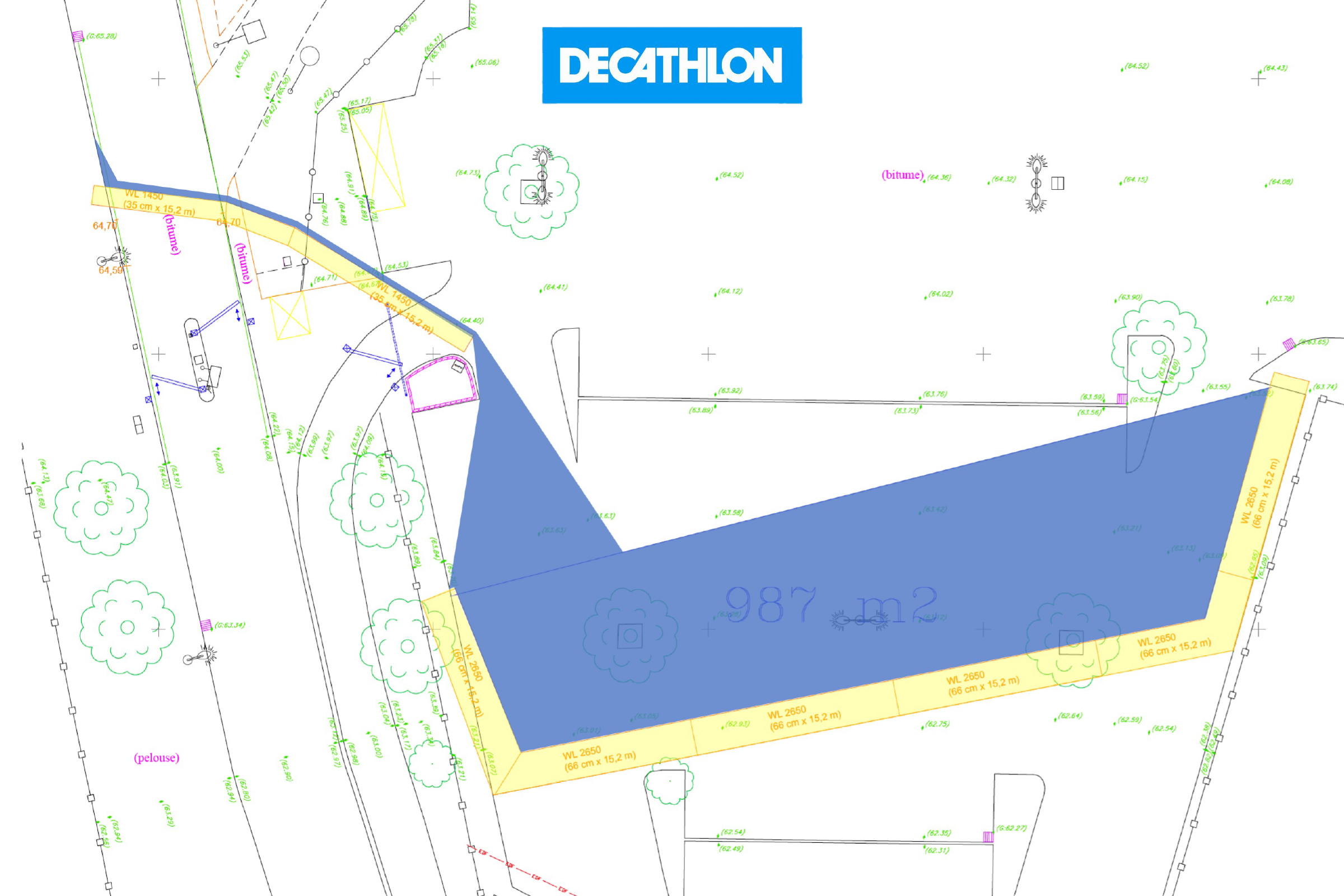#1 | Fire extinguishing waters – Sloping Ground
How to contain large volumes on sloping ground?
- 360° study. It must be ensured that all the contaminated water can be recovered, as far as possible from the buildings, without hindering the action of the emergency services.
- Gravity flow: it is the topography and the rainwater networks that will make it possible to identify the flood zones.
- Retention volume: the heights and length of the mobile device are adapted to the topographic characteristics of the retention zones.
Deployment diagram of 8 Water-Gate© flexible dams – 122m
Strategy: divert the flow of polluted water from the access road to the containment zone (“Light Vehicles” car park) while maintaining access to the site for emergency vehicles (flexible barriers that can be crossed by a vehicle).
Submersible area: 1000 m2
- 2 WL-1450 + 6 WL-2650 | Maximum height: 66cm
- 1 rapid deployment box: L 165 x l 122 x h 100 cm | Weight 610 kg
- Installation time (container on site): 3 people 15 min | 2 people 20 mins
Containment volume: 300 m3
Deployment diagram of 18 Water-Gate© flexible dams – 250m divided into 3 zones
Strategy: contain runoff flows from buildings by using parking spaces as temporary storage basins.
3 submersible areas | Total floodable area: 9160 m2
- 2 WL-1450, 2 WL-2630, 10 WL-2650, 4 WL-3950 | Maximum height: 100cm
- 3 rapid deployment boxes (370 kg / 640 kg / 735 kg)
- Installation time: 4 people 25 min | 2 people 45 mins
Cumulative containment volume: 2600 m3









